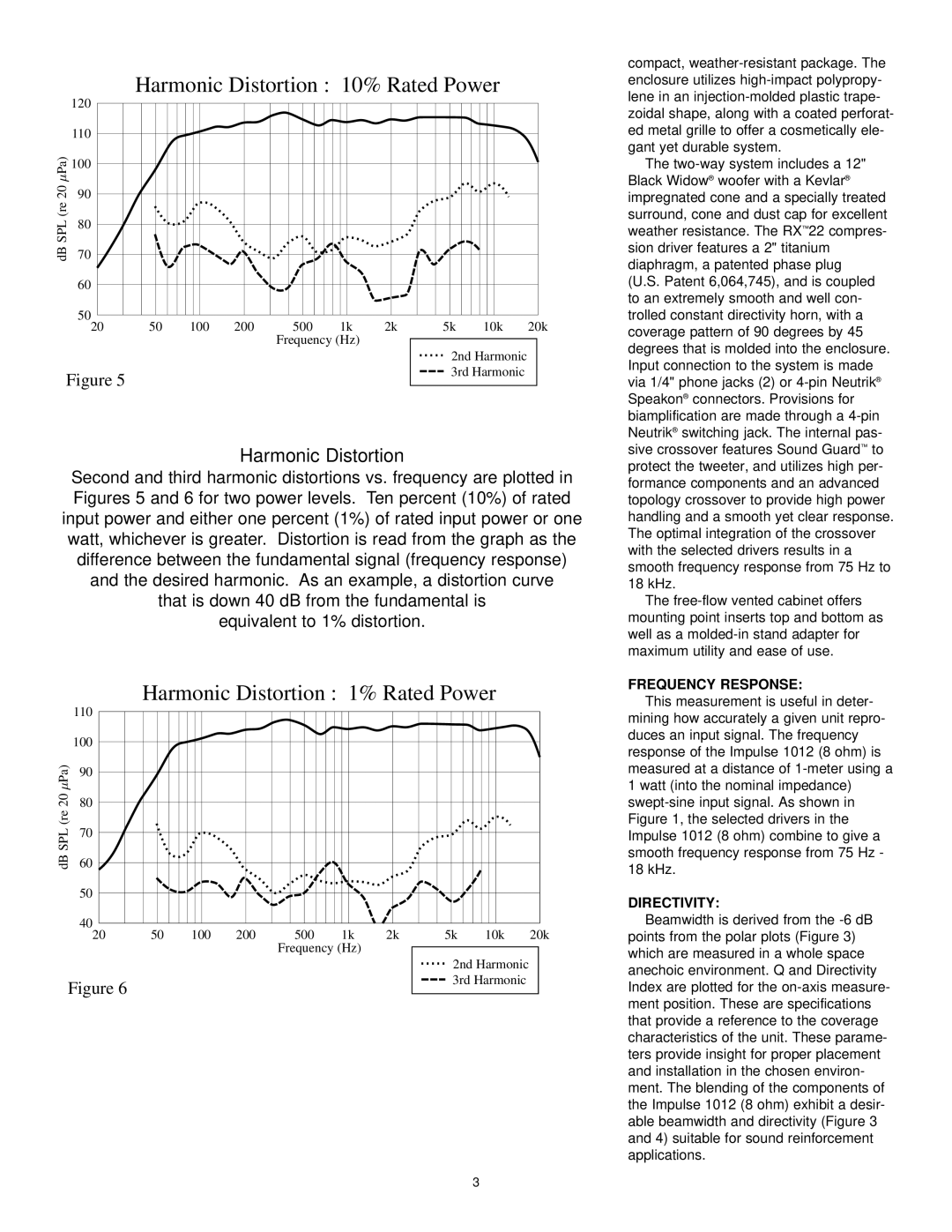1012 specifications
The Peavey 1012 is a versatile speaker designed for a range of musical applications, making it a popular choice among musicians and sound engineers. Known for its reliability and sound quality, the Peavey 1012 boasts several key features that set it apart from other speakers in its class.One of the standout characteristics of the Peavey 1012 is its robust construction. The cabinet is built from high-quality materials that ensure durability while reducing unwanted resonance. This is crucial for producing clear sound without distortion, even at higher volumes. Additionally, the speaker is designed with a compact form factor, making it easy to transport and suitable for various performance environments.
The Peavey 1012 features a 12-inch woofer, which delivers deep bass and rich mid-range frequencies. This is accompanied by a high-frequency compression driver that allows for smooth, detailed treble response. Together, these components create a balanced audio output that enhances the overall listening experience, whether used in a live setting or for playback.
Another significant feature of the Peavey 1012 is its power handling capability. With a power rating that supports both passive and active configurations, the speaker can accommodate a wide range of amplifiers and audio setups. This flexibility makes it an excellent choice for musicians who may want to connect it to different sound systems depending on the venue.
Peavey has also integrated their proprietary technologies into the 1012. The inclusion of the SonicGuard protection circuitry prevents damage to the high-frequency driver, ensuring longevity and reliability during intense performances. Additionally, the speaker’s advanced dispersion patterns allow for an even coverage area, making it effective in both small and large venues.
Overall, the Peavey 1012 is a well-rounded speaker that exemplifies quality engineering and sound performance. Its combination of durability, sound fidelity, and versatile application makes it a favored option for touring musicians, DJs, and sound engineers alike. Whether you are performing at a small gig or a large event, the Peavey 1012 remains a dependable choice that delivers performance and clarity, ensuring that your sound is always front and center.

